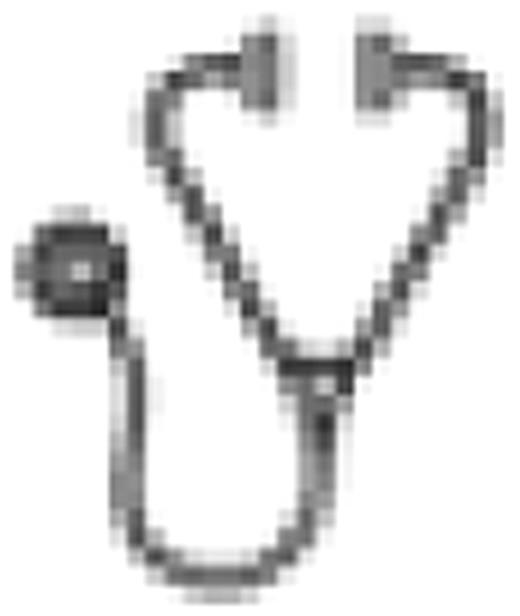Abstract
Abstract 507
APL is rare in children (approximately 10% of childhood AML, and 10% of APL) and is characterized by a higher incidence of WBC > 10G/L, microgranular M3 variant (M3v),and bcr2-3 isoforms of PML-RAR rearrangement than in adults. ATRA combined to chemotherapy (CT) is generally considered to give similar overall results in children and adults (De Botton, JCO 2004, Ortega, JCO 2004, Testin, Blood 2005). However, whether children age has an impact on APL outcome is unknown. We compared disease characteristics and outcome of children aged <=12, adolescents (ados), aged 13–18 and adults, aged > 18 included in 2 multicenter trials of the European APL group (APL 93 and 2000) with a median follow up of 10 and 5 years, respectively (resp).
In both trials, pts received induction therapy with ATRA (45 mg/m2/d until CR) and DNR (60mg/m2/d x3d)+/− AraC (200 mg/m2/dx7) followed by consolidation with a similar course and a final DNR (45 mg/m2/d × 3) +/− AraC (1-2 g/m2/12h × 8) course with or without maintenance with intermittent ATRA and/or continuous low dose 6MP+ MTX, during 2 years. ATRA dose during induction was reduced in children to 25 mg/m2/d only in case of side effects. In APL93 trial, pts with WBC<5 G/l were randomized to receive ATRA+CT or ATRA followed by CT during induction, and maintenance was also randomized. In APL2000 trial, pts with WBC<10 G/l were randomized to receive or not Ara C during induction and consolidation courses, while all pts received maintenance and pts with WBC > 10G/L received intrathecal CNS prophylaxis.
Of the 833 consecutive newly diagnosed APL pts aged <60y included in the 2 trials, 26 (3%), 58 (7%) and 749 (90%) were aged <=12 (children), 13–18 (ados), and> 18 (adults), resp. Median WBC was 10.8 (range 1.4–148), 2.6 (0,5-77,3) and 2.7 (0,2-183) G/L in children, ados and adults, resp (p=0.0001) and 13/26 (50%), 16/58 (27%) and 187/749 (25%) of them had WBC > 10G/L, respectively (p= 0.038). Median baseline platelets were 23, 23 and 32 G/l in children, ados and adults, resp (p=0.02). M3v subtype was found in 23%, 24% and 13% (p=0.03) across age groups. No imbalance for treatment arms that proved less effective (without maintenance in APL 93, and without AraC in APL 2000 trial) were seen across age groups.
CR rates in children, ados and adults were 92%, 100% and 94.5% resp (p=0.1). The frequency of differentiating syndrome did not significantly differ between age groups (16%, 26.7% and 22,8%, resp, Children vs ados p=0.2, overall p=0.6). The 5 year cumulative incidence of relapse (CIR) was 33%, 20% and 23% in children, ados and adults (Children vs ados p=0.3, overall p=0.5), 5-year OS was 75.6%, 93.6%, and 80.4%, resp (Children vs ados p=0.03, overall p=0.03).
12 of the 26 children were aged ≤4 years and 14 aged 5–12. Median WBC (8 and 14.8 G/, p= 0.72) and CR rate (91% vs 93%,p=0.72) did not differ in the 2 subgroups. 6 of the 26 children relapsed. 5 of the 6 relapses occurred in pts ≤4 years. Five year CIR was 47% and 18.9% (p=0.03) and 5 year OS was 72% and 78.9% (p=0.62) in children aged ≤4 years and 5–12, respectively.
Our results suggest that adolescents with APL have an outcome at least as favorable as that of adults. Children appear to have more relapse, however mainly observed in children <4 years, and correlated with pre-treatment risk factors (especially high WBC counts). Young children may require reinforcement of first line treatment, including possible addition of ATO.
Fenaux:CELGENE, JANSSEN CILAG, AMGEN, ROCHE, GSK, NOVARTIS, MERCK, CEPHALON: Honoraria, Research Funding.

This icon denotes an abstract that is clinically relevant.
Author notes
Asterisk with author names denotes non-ASH members.

This feature is available to Subscribers Only
Sign In or Create an Account Close Modal